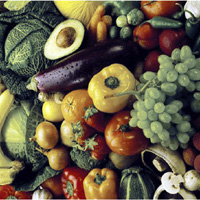When most people think of losing weight, they think of doing some kind of intense activity like running to burn fat off. While exercise is helpful in keeping or obtaining a fit body, it is secondary to what you are putting into that body.
Many people also eat too many carbohydrates, which contribute to weight gain. Here are 5 foods that you can start adding into your diet immediately that will help you to lose or keep away unwanted weight. (Think of replacing some unnecessary carbs with these foods):
1. Almonds/Almond butter. This is a great addition to your meals to get some extra fat burning fat, and feel full longer. I tend to snack on almonds often, and the result is higher energy levels, feeling satiated, and a flatter tummy. Research published in the International Journal of Obesity indicates that diet-study participants who ate one serving of almonds daily for six months lost 18% of their body fat. Study participants who had a diet with the same amount of calories and protein but substituted an equal number of calories in complex carbohydrates (from a source like whole grain crackers) instead of the almonds, lost only 11% of their body fat.
2. Avocados. Contrary to popular belief, avocados are extremely healthy and a great food to eat if the goal is to burn fat. They are loaded with essential healthy fats that our bodies need. Typically, health-conscious people will see the guacamole dip and avoid it because of all the fat. Nonsense! You would be better off not having the chips and eating several spoonfuls of guacamole if you are wanting to eat a food that will help you slim down instead of pack on the pounds.
3. Broccoli. I hated this vegetable as a kid, but began enjoying it as an adult, when I decided to eat foods that would give me more energy and help burn fat away instead of junk food. A good way to eat broccoli is to steam cook it and pour olive oil and sprinkle sea salt on it. Yum! With great dietary fiber, nutrients and protein, broccoli stands as one of the most nutritious and healthy foods we can eat.
4. Green Tea. Another amazingly healthy green food. Several studies have shown that drinking green tea boosts exercise-induced weight loss. A new study in the Journal of Nutrition confirms the weight loss benefits and claims drinking green tea also helps the body burn fat - belly fat in particular. Drink up!
5. Coconut Oil. Yes, it's loaded with saturated fat, and common wisdom says this is fattening and will lead to dreaded high cholesterol. This is where common wisdom is wrong! Coconut oil has been shown to help with fat burning with a rare type of fat called Medium Chain Triglycerides (MCT's). MCT's are more suited for energy use rather than fat storage. One study on coconut oil, published in the American Journal of Clinical Nutrition, demonstrated that the medium-chain fatty acids that comprise coconut oil were threefold more effective than polyunsaturated oils at raising metabolism. Make sure to get high quality, virgin coconut oil- taste and nutritional value will be higher!











